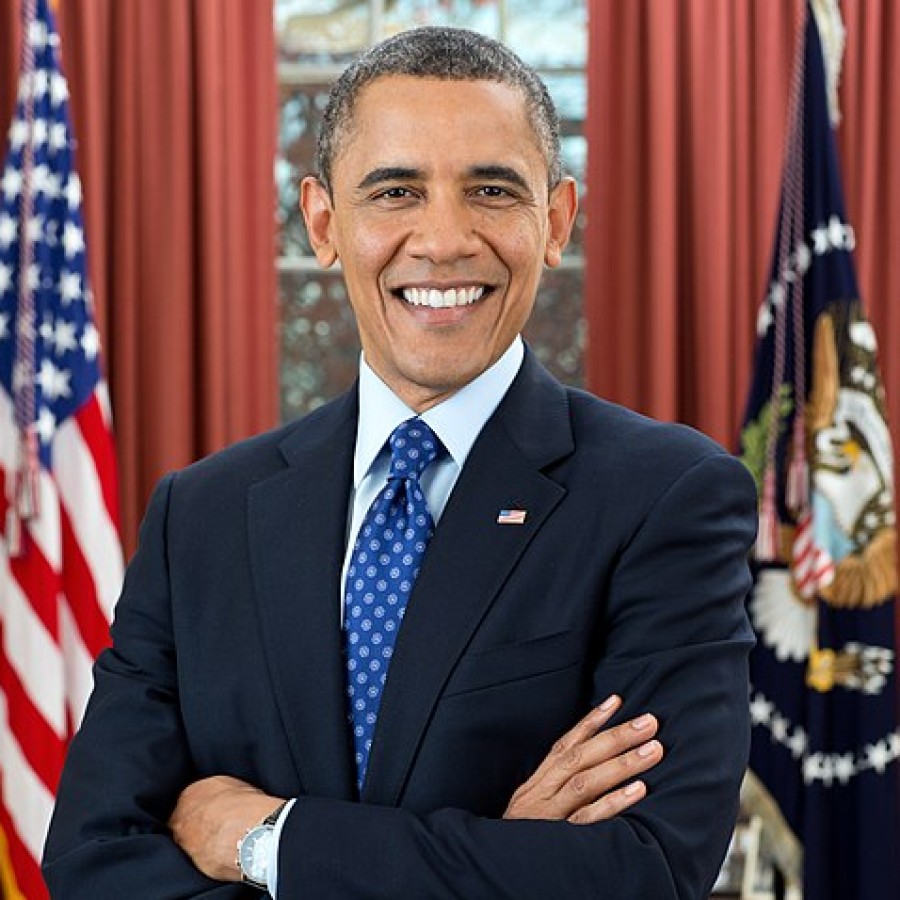On February 12, 2018, the National Portrait Gallery in Washington D.C. revealed the presidential portraits of Michelle and Barack Obama. This unveiling has not gone unnoticed. Not only are the Obamas the first African-American president and first lady , they are the first to choose African-American artists to commemorate their time spent in office through their presidential portraits.
Kehinde Wiley was chosen by Mr. Obama to portray him. Wiley is known for drawing young African-American men into contemporary settings and did so with Mr. Obama as well. While working with Wiley on his portrait, Mr. Obama had requests of his own as to what he would look like. “I tried to negotiate less grey hair and Kehinde’s artistic integrity would not allow him to do what I asked.” He also joked, “I tied to negotiate smaller ears, struck out on that as well.”
In his presidential portrait, Mr. Obama sits in a wooden chair with a firm but contemplative facial expression. He is painted in a formal black suit, and he appears to be suspended in midair, enclosed in a wall of greenery.
Wiley chose symbolic plants to surround the former president. The African blue lilies are painted to represent Mr. Obama’s father’s birthplace, and the jasmine is representative of his own birthplace: Hawaii. In Chicago, the designated flower is chrysanthemums and in Mr. Obama’s own life, they symbolize where his career began. He started his political journey there as an associate at a law firm and later was elected into the Illinois Senate in 1996.
As for Mrs. Obama’s portrait, her choice of an artist was Amy Sherald. Sherald tends to draw African-Americans and paints their skin using grayscale. She uses this technique to make her statement that race is irrelevant to her and her work and that it should also be to irrelevant to society.
Mrs. Obama is set against a light blue background in a flowing gown. The dress is painted in a pyramid shape so the top point rises to Mrs. Obama. As for the dress itself, Sherald’s use of abstract design shines through. The patterns in the dress reflect the modern yet traditional essence of the Obamas activism. The quilt-like design parallels modernist quilts made by African-Americans that began by being made with scraps of fabrics. In addition, the seemingly flowing fabric gives off a bold yet ladylike feel.
On Instagram, Mrs. Obama took to caption a post with her portrait. “As a young girl, even in my wildest dreams, I never could have imagined this moment.” She added, “This is all a little bit overwhelming, especially when I think about all of the young people who will visit the National Portrait Gallery and see this, including so many young girls and young girls of color who often don’t see their images displayed in beautiful and iconic ways. I am so proud to help make that kind of history.”
Questions were raised about Mrs. Obama’s face in her portrait as many people believe it doesn’t convey her personal facial features. Others say that this is due to her skin being painted with grayscale and that Sherald focuses less on the subject but more on the meaning. The facial expression given off by Mrs. Obama in the painting is a determined but speculative.
Both of the Obama portraits are not like anything else already hung in the National Portrait Gallery. Traditionally, other presidential portraits have shown the former presidents standing or sitting tall, all focus on them. As for the First Lady portraits, they have tended to show the women as idealistic and hopeful. But, as for the green wall and symbolic dress, the Obama portraits are the first of their kind.









